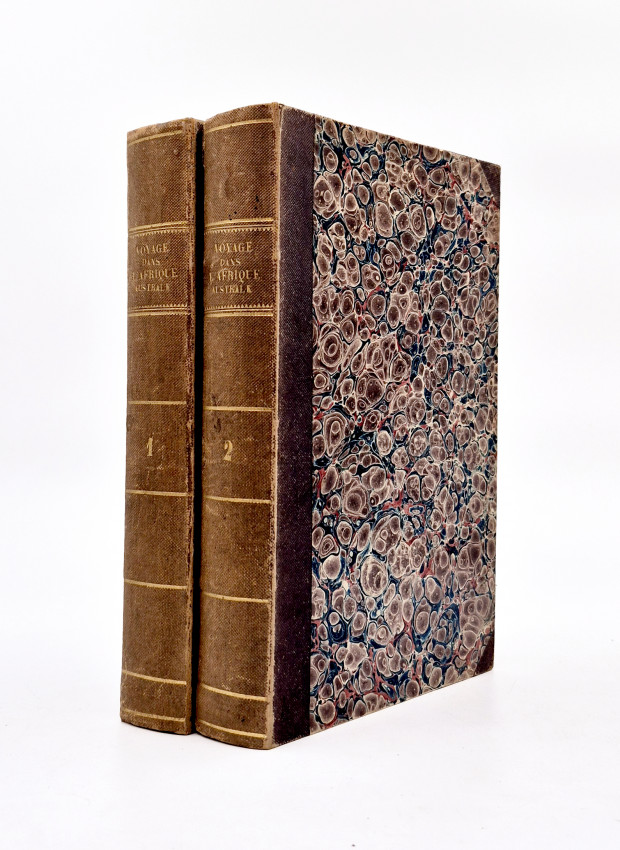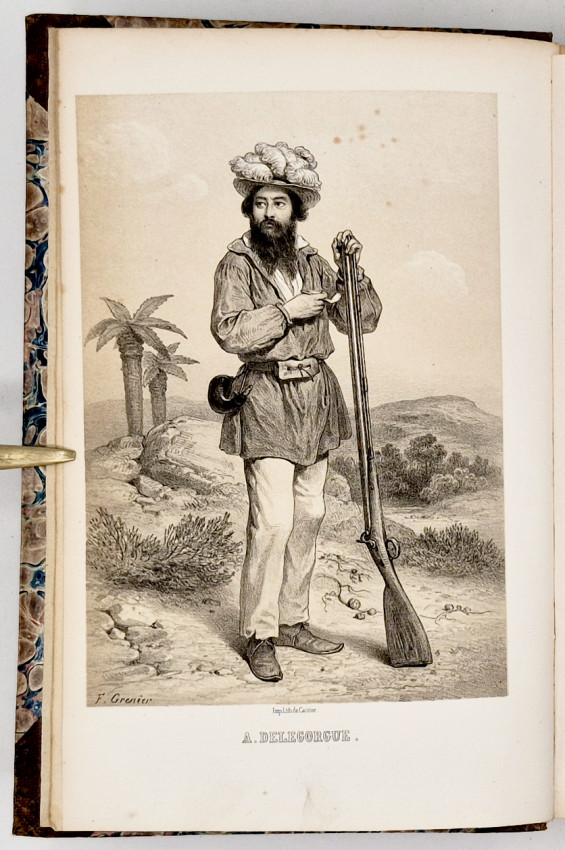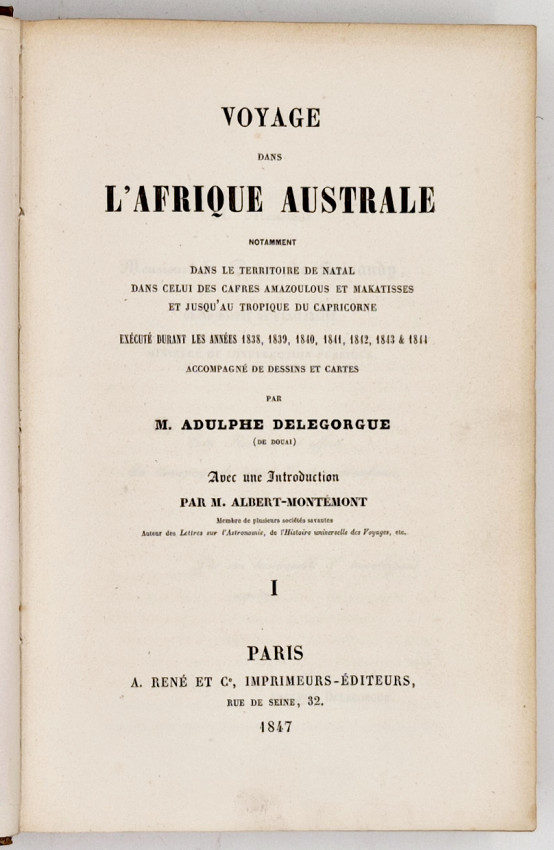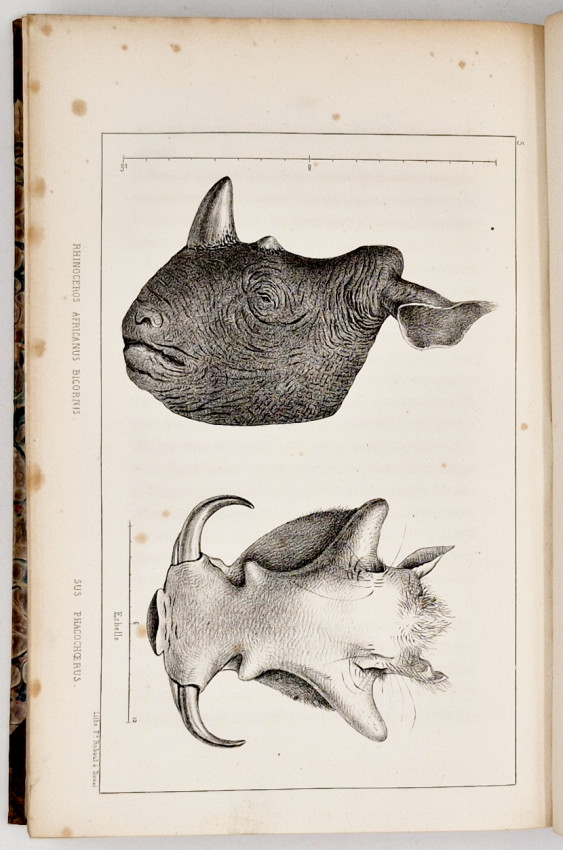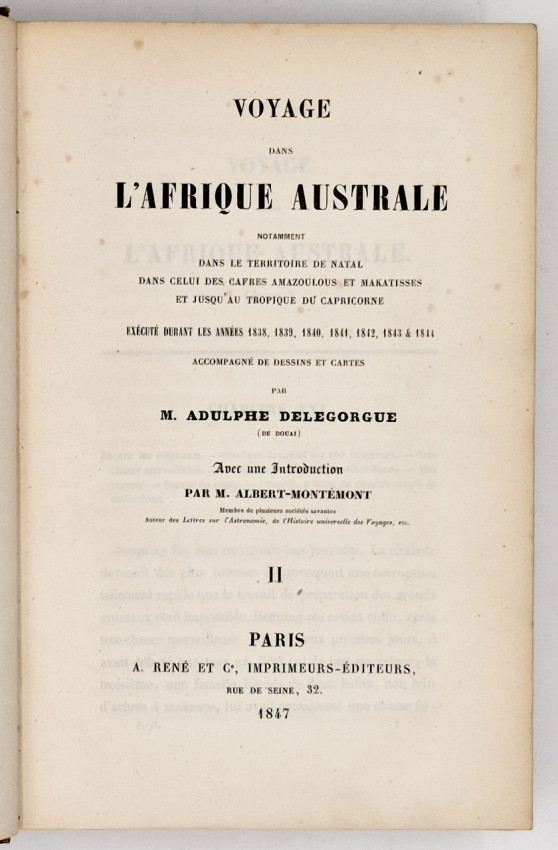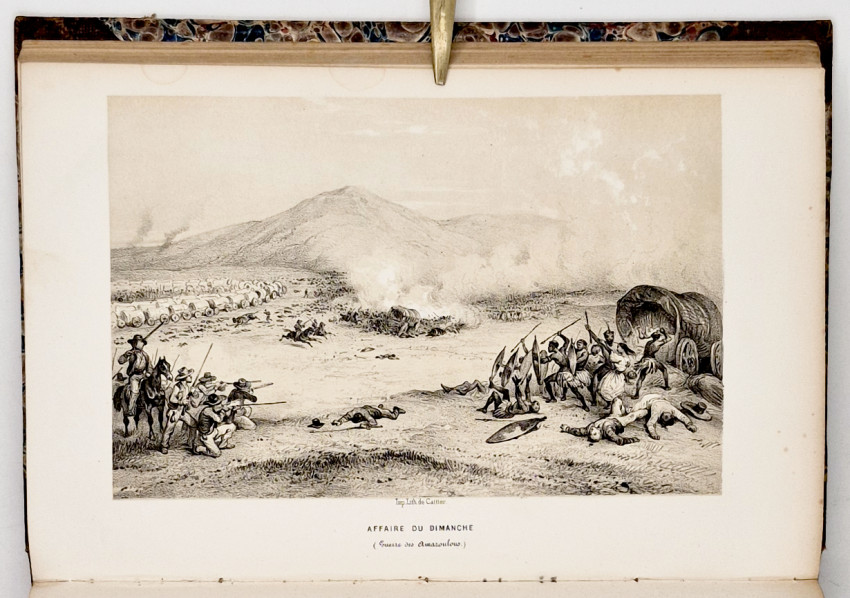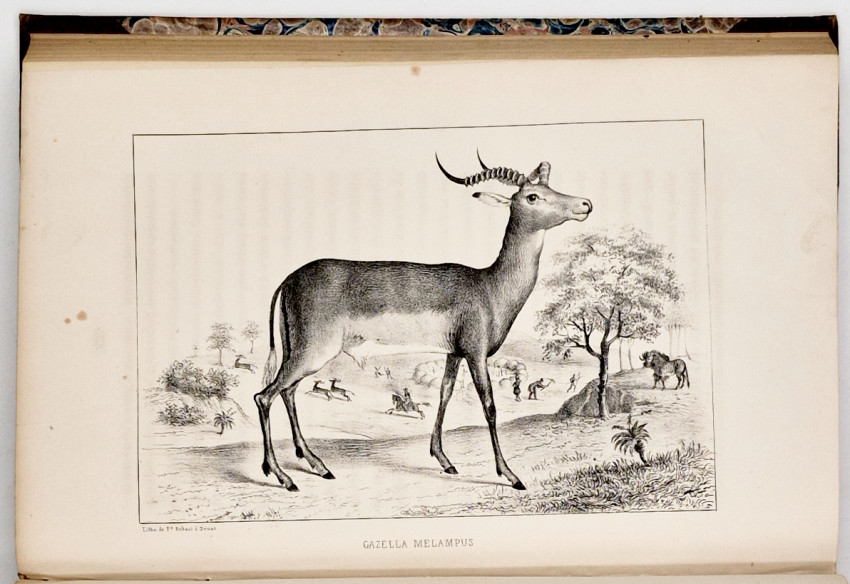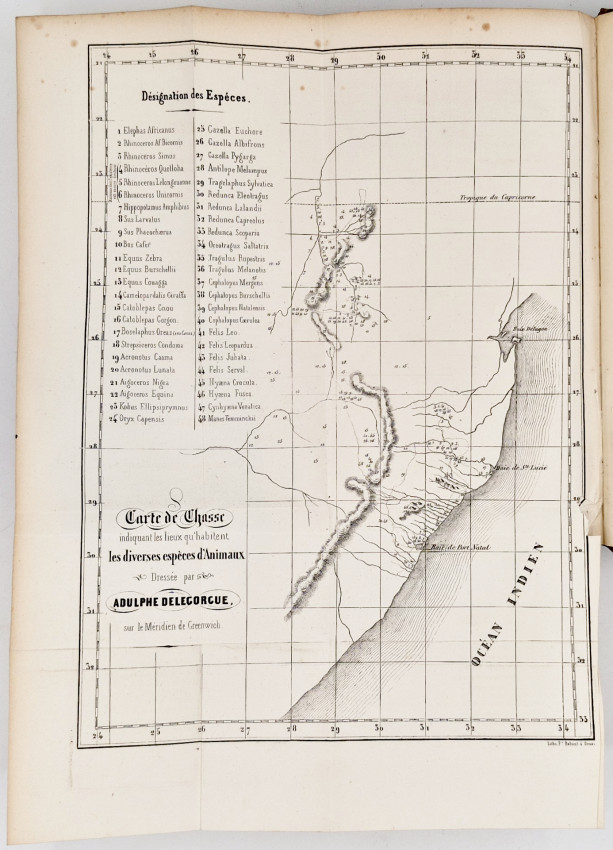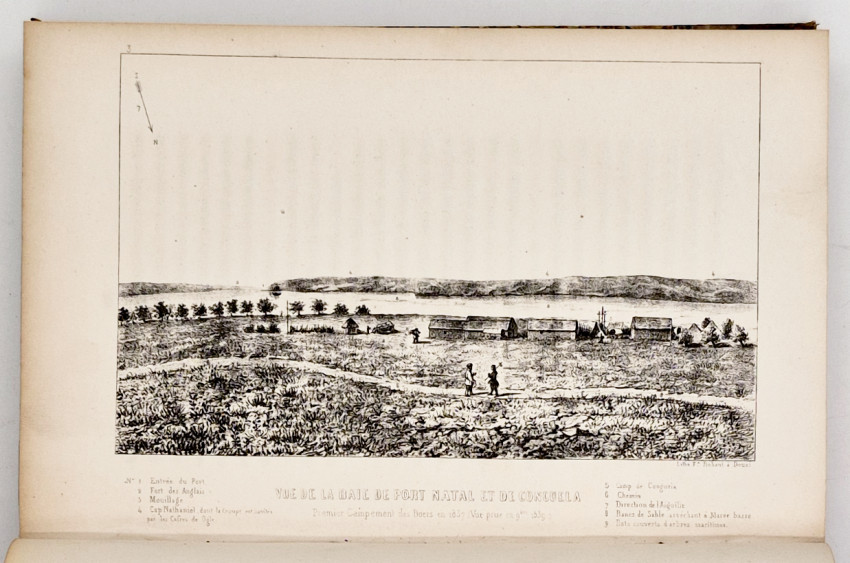First Edition: 2 volumes: I. xvi, 580. II. 622 pages, 2 folding maps, frontispiece portrait of the author, 8 lithographic plates - 4 tinted, half brown cloth with marbled paper sides, contents, plates and maps clean, a very good copy.
Harvard's Library Collections (https://archive.blogs.harvard.edu/preserving/2014/04/13/delagorgues-journey-through-the-zulu-kingdom/) Louis Adulphe Delegorgue, born in 1814, embarked on lifelong travels at the young age of 16. His greatest passion was for Africa, which supplied him with endless naturalist interests and satiated his tremendous appetite for big game hunting. Delegorgue’s travels in Southern Africa began with his arrival in Cape Town in 1838, and lead to an extensive exploration of the inland territories of Natal and Zululand, where he collected specimens and hunted and killed a large number of animals for sport. He returned to France publishing an account of his travels in South Africa. Untrained and without any formal scientific education, Delegorgue had an unusual mixture of adventurous, even violent, temperament with a proclivity toward careful and thoughtful observation. He was certainly reckless at times, arrogant, perhaps even duplicitous, collecting numerous specimens for scholarly study but also acquiring ivory and hides for personal gain. In a similar way, he studied indigenous people he met, but concluded that they were inferior to the Europeans, merely suitable to hold and carry his gun during a hunt. Yet, on the other hand, he took the time to compile an extensive dictionary of Zulu vocabulary, the earliest known to be collected and published, even still considered a valuable linguistic resource today. On a later expedition, he died of fever during a trek across the African continent at the young age of 35. While not a household name amongst the African explorers of the 19th century, his legacy remains. The college of his home town was named after him, along with several animal species, including the Delagorgue Pigeon.
Mendelssohn (Sidney) South African Bibliography, volume 1, page 442: 'An important work on Natal and Zululand in the middle of the nineteenth century. The author was destined for the French Bar, but was seized with an uncontrollable desire to visit Africa and a distaste for the legal profession. He had read Le Vaillant's travels with avidity, and had become enamoured of the wild liberty only to be found in the deserts of Africa. He succeeded in his desire to rid himself of his projected career, which, he says, hung over him like a nightmare, and took up the new vocation of a sailor, in the course of which he navigated, for five years, the coasts of the north of Europe, Senegal, and the Antilles. He had, however, to retire from this life owing to a severe attack of illness, but soon tiring of an in-active existence, he finally decided to sail for the Cape, where he arrived in 1838. He gives a lively description of Cape Town and of the Cape Colony at this period, and evidently studied the affairs of the country with close attention. He remarks on the ill success which had attended the missionary efforts of Dr. Philip and his coadjutors, and makes some pungent comments on the effects of their teaching on the minds of the aborigines. After some travels in the colony, Delegorgue decided to visit Natal, where he was present during the wars of the emigrant Boers with Dingan, and subsequently with the British. It is significant to note that in his account of the proceedings of Retief, he mentions that the Boer leader received an address of welcome from the "original settlers" of Natal, thus clearly proving the fact that there was a prior British occupation. The author, however, was of opinion that Great Britain had no right to the country, and he seeks to prove his case by quoting from the "Cape of Good Hope Punishment Bill" (William IV., August 1836). The volumes contain considerable information respecting the Boers and natives of the country, together with sporting anecdotes, &c. There is a Zulu vocabulary, a catalogue of Lepidoptera, entomological notes, a route map of the author's journeys, a chart showing the localities in which various kinds of game abounded, several engravings, a portrait of the author, and an index.'
- Overall Condition: Very good
- Size: 8vo (240 x 160 mm)
- Sold By: Clarke's Africana & Rare Books
- Contact Person: Paul Mills
- Country: South Africa
- Email: [email protected]
- Telephone: 021 794 0600
- Preferred Payment Methods: Visa & Mastercard via PayGate secure links and Bank transfers.
- Trade Associations: ABA - ILAB, SABDA


